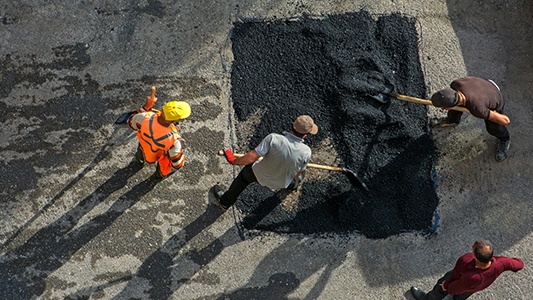Driving & Safety
Summer safety driving tips.
During the summer months, there are more people are on the roads visiting friends and family, driving to the cottage, enjoying day trips or holidays. Get the most out of your summer with some helpful safe driving tips.
Motorcycles and you...
Motorcycle safety awareness is something both motorcyclists and other drivers need to be concerned with throughout the warm weather driving season.
Let's be careful out there! There are more motorcycles and scooters on the road every year in Canada, with a corresponding rise in the number of accidents and injuries. It's worth a reminder to all motorists to share the road and be extra alert when driving to keep themselves and motorcyclists safe.
CAA Manitoba offers some tips to keep riders safe on the streets:
- Always wear protective clothing and protective gear including a helmet.
- Never ride when tired or under the influence of alcohol or drugs.
- Follow the rules of the road, including the speed limit.
- Be seen. Stay out of a larger vehicle's blind spot.
Statistics show most motorcycle accidents are not caused by motorcyclists, but other drivers who don't see the smaller machine.
Here are some tips for other drivers to increase their awareness of motorcycles:
- Keep your eyes peeled. Check traffic thoroughly and signal your intentions before merging or changing lanes.
- Allow a greater following distance behind a motorcycle. In dry conditions, they stop a lot faster than cars.
- Recognize that motorcyclists may suddenly adjust their speed and lane position in reaction to conditions such as potholes, gravel, slippery surfaces, railroad crossings and grooved pavements.
...and bicycles too!
Perhaps the biggest safety tip for drivers is to watch for cyclists, and share the road. Cyclists can help drivers by following the rules of the road and riding defensively.
Be safe, be visible and be predictable.
- Ride in the same direction as traffic.
- Avoid sudden swerves.
- Use a white light on the front and a red or amber light on the back of your bicycle.
- Use hand signals or point to convey your intentions.
- Come to a complete stop before entering a street from a roadway, alley or driveway.
Drivers: vigilance & respect.
- Watch carefully for cyclists and give them the room they need.
- If you can’t pass a cyclist safely, slow down as you would for any other vehicle until its safe to pass.
- When making a right turn, shoulder check for cyclists.
- After parking, check for cyclists before opening your door.
Tune-up tips.
Modern vehicles are a testament to sophisticated engineering. Here are some areas on your vehicle that deserve attention:
- Start with checking spark plugs & ignition wires.
- Change oil and oil filter every 5,000 km or as outlined in your manual.
- Check other filters such as air, fuel, & PVC; replace as necessary.
- Inspect fuel injectors and oxygen sensors, which are easily fouled by increased winter idling.
- Brake inspection: winter can ravage brake pads, rotors & caliper slides.
- Cooling system: radiators should be flushed once a year - overheating is the greatest cause of summer breakdowns.
- Battery: test for strength and clean away any corrosion. (Also check body and engine electrical grounds; loose or corroded grounds can cause all sorts of headaches.)
- Switch your winter tires to summer tires; rotate tires every 8,000 kms; check tire pressure biweekly.

Construction zones.
You know the old joke: "There are two seasons in Manitoba; winter and construction season!"
The danger that high speed traffic poses to construction workers isn't a joke, though. Roadside workers are only too aware of the risks, and injuries and fatalities are, unfortunately, not unknown. The solution is simple: slow down – it's that easy. In fact, it's the law.
Remember that in Manitoba the speed limit in a construction zone is 60 kilometres per hour on highways and urban freeways. The speed limit is 30 – 40 kph in all other urban areas. Drivers need to watch carefully for both workers, and the construction equipment moving in and around a construction zone.